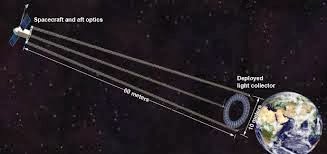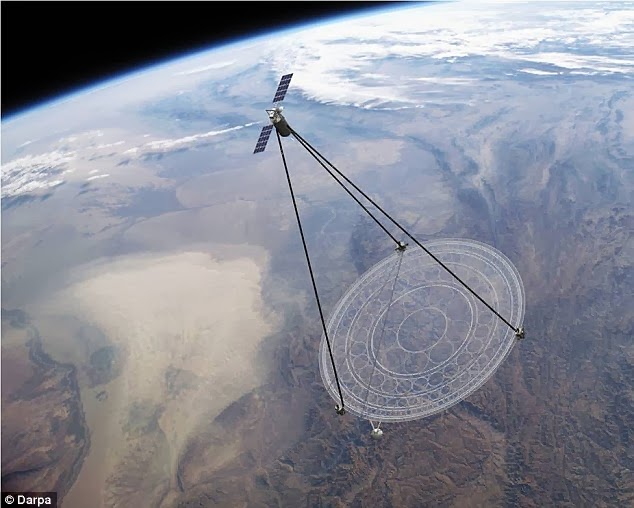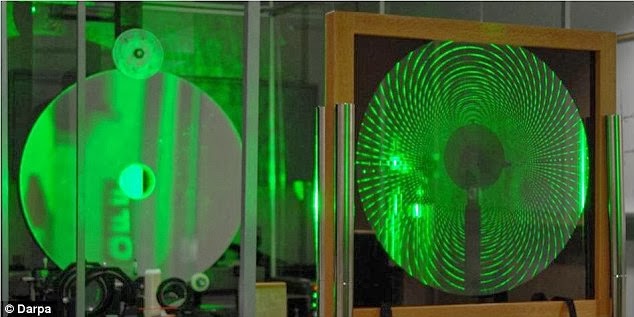Chapter thirty eight its happening as part of the refurbishments on the International Space Station It was the second spacewalk in four days for oncoming 2014 new year celebration.

As the US astronauts Rick Mastracchio and Michael Hopkins, and only the second Christmas Eve spacewalk in NASA history. NASA ordered up the spacewalks to revive a critical cooling loop at the International Space Station. No turkey for Christmas as astronauts Rick Mastracchio (top) and Michael Hopkins spend their Christmas Eve repairing an external cooling line on the International Space Station. It is another small step for man as astronaut Mike Hopkins (on the robotic arm , lower right). Rick Mastracchio (front) take a rare spacewalk outside the International Space Station (ISS) All nonessential equipment had to be turned off when the line conked out on 'December 11, and many science experiments halted'. With today's success , the cooling system should be restored and all equipment back up and running by this weekend, according to NASA.

Mastracchio and Hopkins removed the faulty ammonia pump during Saturday's outing. On Christmas Eve, they installed the fresh pump. Standing on the end of the station's main robotic arm, Hopkins clutched the 780-pound, refrigerator-size pump with both hands as he headed toward its installation spot, and then slid it in. An astronaut working inside, Japan's Koichi Wakata, gingerly steered the arm and its precious load . 'Mike Hopkins taking a special sleigh ride on this Christmas Eve,' Mission Control commentator Rob Navias said as the space station soared over the Pacific. It was slow going because of a balky ammonia fluid line that sent frozen flakes of the extremely toxic substance straight at the men -.. 'a mini blizzard,' as Mission Control called it The spacewalkers reported being surrounded by big chunks of the stuff that bounced off equipment and, in all probability, their suits' The ammonia needed to dissipate from their suits before the pair returned inside ', to avoid further contamination. Christmas eve spacewalk on ISS to fix broken cooling pump. Flying high' It's like Christmas morning opening up a little present here, 'astronaut Rick Mastracchio (top) said as he checked his tool kits .

Zero gravity as astronaut Mike Hopkins lies against the robotic arm during a spacewalk outside the International Space Station astronauts fix damaged cooling system in rare Christmas Eve spacewalk NASA astronauts Rick Mastracchio and Michael Hopkins ventured out of the International Space Station to repair a cooling system on December 24 It was the second Christmas Eve spacewalk in NASA history, the first was in 1999.

NASA says all equipment should be up and running by the weekend 'Wow,' Hopkins sighed after the fourth and final fluid line was hooked to the new pump. Astronauts have wrapped up urgent space station repairs during a rare Christmas Eve spacewalk, braving a 'mini blizzard' of noxious ammonia as they popped in a new pump. The electrical hook-ups went more smoothly, and six hours into the spacewalk, Hopkins finally called down, 'Houston, you've got yourself a new pump module'. Christmas references filled the radio waves, as the action unfolded 260 miles above the planet. 'It's like Christmas morning opening up a little present here,' Mastracchio said as . he checked his toolkit Later, as he worked to remove the spare pump from its storage shelf, he commented: 'Now it really feels like I'm unwrapping a present.' Mission Control in Houston was in a festive mood, despite the gravity of the situation. Tabletop Christmas trees, Santa dolls and red Santa caps decorated the desks. NASA's only previous Christmas Eve spacewalk occurred in 1999 during a Hubble Space Telescope repair mission. But NASA's most memorable Christmas Eve was back on December 24, 1968. Apollo 8 astronauts read from Genesis, the first book of the Bible, as they orbited the moon on mankind's first lunar flight.

Lost in space as the Christmas Eve venture was the second spacewalk in four days for US astronauts Rick Mastracchio and Michael Hopkins. As a bad valve in the ammonia pump caused the latest breakdown. Another team of spacewalking astronauts installed that pump just three years ago, and engineers are perplexed as to why it didn't last longer. NASA hopes to salvage it in the years ahead.

The 2010 replacement required three spacewalks because of the difficulty in removing pressurized ammonia fluid lines. But this time, the astronauts managed to squeeze everything into two after NASA reduced the pressure and 'simplified this task'. Mission Control planned to wait until Tuesday evening before fully activating the new pump, but initial testing showed everything working well. The two-line cooling system uses ammonia to dispel heat generated by on -board equipment;.. only one loop was disabled by the breakdown. It been a busy as NASA astronaut Michael Hopkins work to repair an external cooling line on the International Space Station on a spacewalk 260 miles above Earth on Saturday The second spacewalk was supposed to take place on Monday, but it was delayed a day to give Mastracchio time to switch to another suit. He inadvertently hit a water switch in the air lock at the end of Saturday's excursion, and a bit of water encroached on a cooling device in the backpack of his suit, making it unusable. Otherwise, the suits remained dry during both spacewalks. Last July, an astronaut almost drowned when water from his suit's cooling system flooded his helmet. Makeshift snorkels and absorbent pads were added to the suits as a precaution. A Moscow -led spacewalk, meanwhile, is set for Friday. Two Russian crew members will install new cameras and fresh experiments outside.
 Chapter forty as the Mars Orbiter Camera on Mars Global Surveyor launched November 1996 and snapped 240,000 images of layered rock formations. Space Cruising brings most of these Martian Images."Grand Canyon"—the Valles Marineris—in December 2000. NASA scientists lost contact with the
surveyor on November 2, 2006. One hypothesis is that a solar panel became 'difficult to pivot', depriving the satellite of enough power to communicate with
Earth. Researchers are continuing efforts to re-establish contact with the
wayward probe, but the outlook is grim. "Realistically, we have run
through the most likely possibilities for re-establishing communication, and we
are facing the likelihood that the amazing flow of scientific observations from
Mars Global Surveyor are over.
Chapter forty as the Mars Orbiter Camera on Mars Global Surveyor launched November 1996 and snapped 240,000 images of layered rock formations. Space Cruising brings most of these Martian Images."Grand Canyon"—the Valles Marineris—in December 2000. NASA scientists lost contact with the
surveyor on November 2, 2006. One hypothesis is that a solar panel became 'difficult to pivot', depriving the satellite of enough power to communicate with
Earth. Researchers are continuing efforts to re-establish contact with the
wayward probe, but the outlook is grim. "Realistically, we have run
through the most likely possibilities for re-establishing communication, and we
are facing the likelihood that the amazing flow of scientific observations from
Mars Global Surveyor are over. The pictures,
which are ten times better than images taken in the 1970s by the Mariner 9 and
Viking spacecraft, are helping scientists unravel the mysteries of Martian
geology—and whether the planet ever was covered by water. The
uniformity of the sedimentary layers, for example, resembles formations created
underwater on Earth. In separate explorations, the global surveyor also found
that parts of Mars's surface contain large amounts of hematite, a mineral that
often forms in the presence of liquid water. Earlier
this year NASA's Mars Global Surveyor found dark markings on the red planet's
south polar cap. Scientists suspect that these markings are formed in the
spring when frozen carbon dioxide rapidly transforms into gas, as seen in this
artist's conception.
The pictures,
which are ten times better than images taken in the 1970s by the Mariner 9 and
Viking spacecraft, are helping scientists unravel the mysteries of Martian
geology—and whether the planet ever was covered by water. The
uniformity of the sedimentary layers, for example, resembles formations created
underwater on Earth. In separate explorations, the global surveyor also found
that parts of Mars's surface contain large amounts of hematite, a mineral that
often forms in the presence of liquid water. Earlier
this year NASA's Mars Global Surveyor found dark markings on the red planet's
south polar cap. Scientists suspect that these markings are formed in the
spring when frozen carbon dioxide rapidly transforms into gas, as seen in this
artist's conception.  Geysers formed by
warming temperatures spew dust and ice hundreds of feet into Mars's air,
scientists write in the latest edition of the journal Nature.An artist's conception shows the
violent thawing, which takes place near the planet's south pole. Some extensive mapping occurred Mars's polar ice caps expand each winter as carbon dioxide in
the planet's atmosphere freezes, the researchers say.
Geysers formed by
warming temperatures spew dust and ice hundreds of feet into Mars's air,
scientists write in the latest edition of the journal Nature.An artist's conception shows the
violent thawing, which takes place near the planet's south pole. Some extensive mapping occurred Mars's polar ice caps expand each winter as carbon dioxide in
the planet's atmosphere freezes, the researchers say.  But during spring, warmer
weather slowly melts the expanded ice.Some of this ice becomes translucent,
allowing sunlight to heat carbon dioxide below the surface, changing it from a
solid directly into a gas in a process called sublimation. Eventually, the
pressure from the gas becomes great enough that it penetrates the surface layer
of ice in a violent eruption."These processes are unlike any observed on
Earth," the researchers write. The scientists say the theory may explain a
long-standing mystery: strange dark spots, fan-like structures, and spidery
patterns that appear near Mars's southern pole every year. The dark spots and
fans are dust thrown up by the geysers, while the spiders are the actual
eruption sites, the scientists write.
But during spring, warmer
weather slowly melts the expanded ice.Some of this ice becomes translucent,
allowing sunlight to heat carbon dioxide below the surface, changing it from a
solid directly into a gas in a process called sublimation. Eventually, the
pressure from the gas becomes great enough that it penetrates the surface layer
of ice in a violent eruption."These processes are unlike any observed on
Earth," the researchers write. The scientists say the theory may explain a
long-standing mystery: strange dark spots, fan-like structures, and spidery
patterns that appear near Mars's southern pole every year. The dark spots and
fans are dust thrown up by the geysers, while the spiders are the actual
eruption sites, the scientists write.


















































